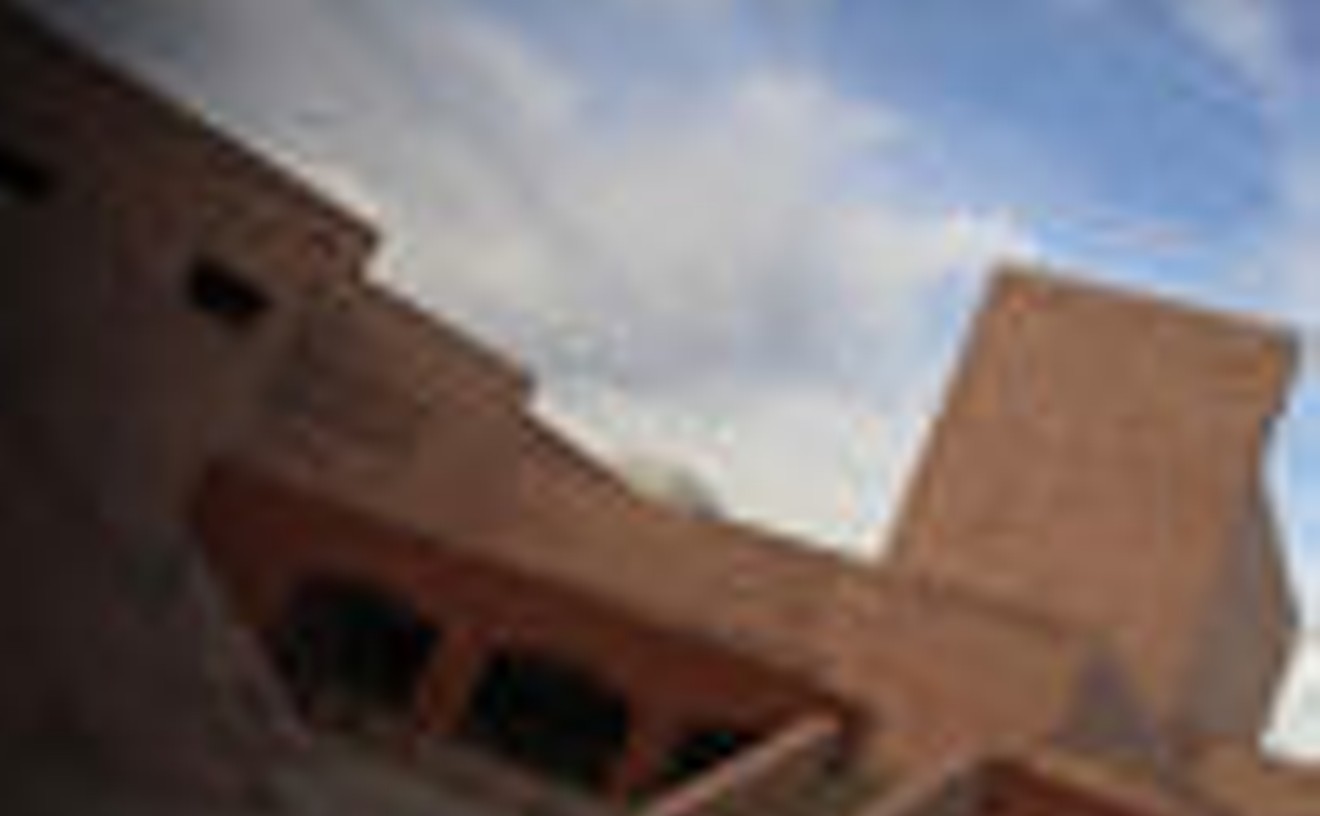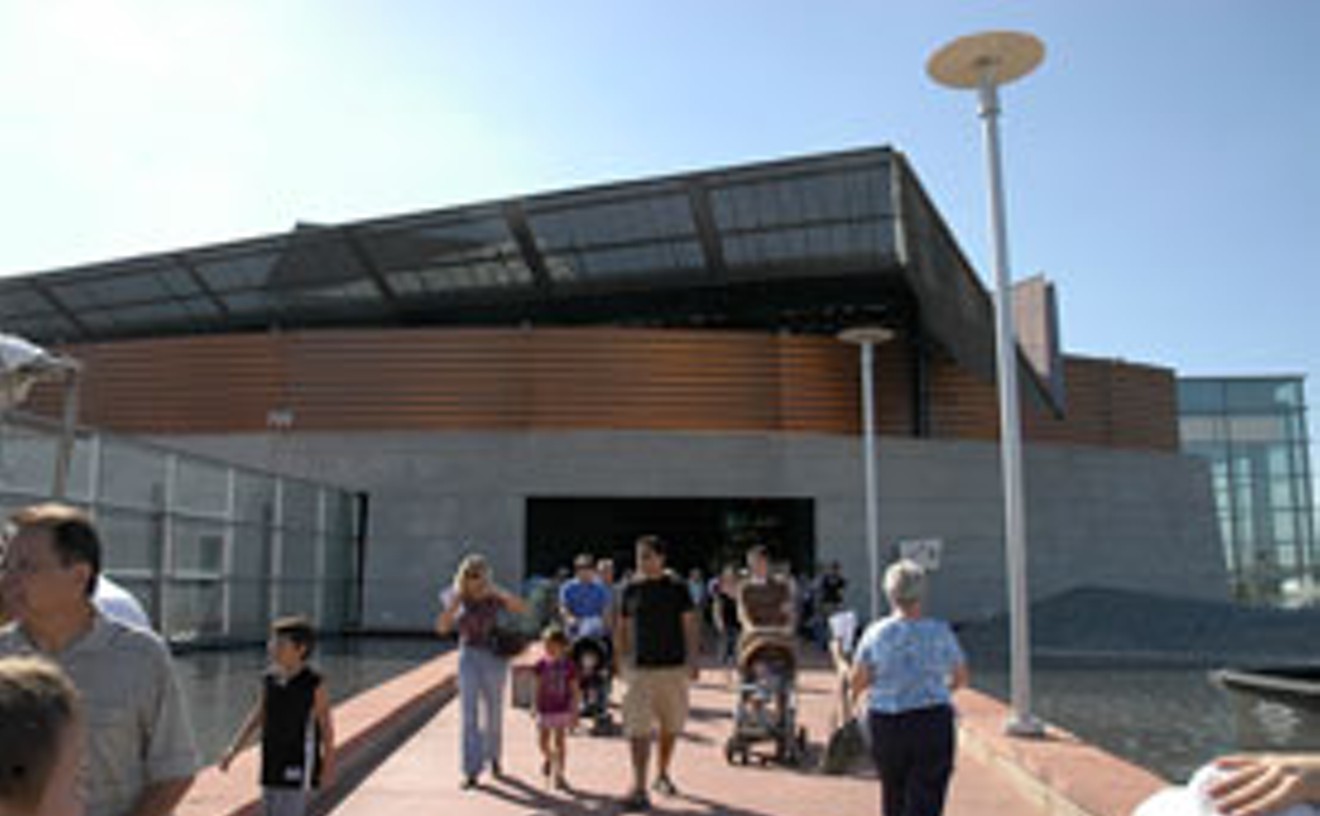Hundreds of families, nearly half of them Latino, converge on Tempe Center for the Arts when Childsplay and Cultural Coalition partner to present their El Puente Theatre Festival and Mask Procession. It's an annual festival-style event featuring free performances, art activities, and storytelling infused with Mexican culture that helps family members of all ages appreciate the value of diversity and learning about others' cultural heritage. There's mariachi music, folklorico dance, and even an exuberant parade, complete with musical instruments and giant puppets, across the Tempe Town Lake Bridge. Together, families from all different backgrounds experience the joy of celebrating Mexican culture together.
Best Border-Inspired Family Event
El Puente Theatre Festival and Mask Procession
Best Latina Art Collective
Phoenix Fridas
It's been more than a decade since Kathy Cano-Murillo, an artist and author who's built her own brand as the Crafty Chica, started the Phoenix Fridas art collective. The roster of artists — all Latina artists inspired by renowned Mexican artist Frida Kahlo — has changed through the years. Even so, it's remained a fierce group united by mutual respect and creativity despite varying art styles, ages, viewpoints, and personalities. Nowadays, it has nine members who exemplify the entrepreneurial spirit while supporting each other's artistic expression. And, of course, the group shares the Frida and crafting love through exhibits, craft boutiques, workshops, and its annual community celebration of Frida Kahlo's birthday each July.
Best Border-Related Gallery Exhibition
"El Sueno Americano — The American Dream"

Photographer Tom Kiefer spent more than a decade working part time as a janitor for a U.S. Border Patrol facility near Ajo, Arizona, where he used his camera to document the personal effects seized from migrants, then thrown away — including wallets, underwear, rosaries, soap, birth control pills, and more. He grouped objects by type before photographing them, then turned his photos into an exhibition meant to prompt reflection on the dehumanization at the heart of turning such personal objects into trash. Through this powerful body of work, Kiefer highlighted commonalities shared by people across cultures and reminded viewers that border-related policies have significant implications for real people.
- 207 N. Gilbert Rd., Gilbert, 85234 Map
- 480-361-1118
- www.artintersection.com
Best Border-Inspired Performance Series
Arizona State University's Performance in the Borderlands
Amid popular culture saturated with the noise of nonsensical political rhetoric, ASU's Performance in the Borderlands fostered collaborations that created safe, yet challenging spaces for dialogue about some of the most pressing issues in contemporary American life — including immigration and racism. Working with Nia Witherspoon, it presented a lineup that included performances of Suzan-Lori Parks' America Play, which explores parallels between a young black man and President Abraham Lincoln. During an artist residency featuring Ana Teresa Fernández, whose work includes symbolically erasing parts of the U.S. and Mexico border by painting them blue to match the sky, it inspired reflections on ways to embrace rather than eschew people from diverse cultures.
Best Border Installation
Ana Teresa Fernandez
While others talk of building walls, San Francisco artist Ana Teresa Fernández is working to erase them. She's done several installations combining visual with performance art at various points along the U.S.-Mexico border. Most recently, she coordinated painting at three different sites, using live streaming video to assure that those who couldn't make the trek to the border would still feel a part of the process. Each time, Fernández buys blue paint matching the particular sky overhead, then invites others to join her in painting blue the prison-like bars comprising the border fence. From a distance, it seems the border has been erased, giving rise to new perspectives on what might be possible without its looming presence.
Best Curator of Border-Inspired Art
Julio Cesar Morales

When he joined ASU Art Museum as a curator in 2012, Julio César Morales said he was "particularly interested in art's unique ability to engage in a social context." It's something he's brought to life again and again, most recently with the exhibitions "Contemporary Photography in Mexico: Existe lo que tiene nombre" and "Miguel Angel Ríos: Landlocked." The latter, which included new videos commissioned by ASU Art Museum, was the first survey of video work by Ríos, who is based in Mexico City. Both were part of the museum's ongoing "Contact Zone" exhibition series, which explores contemporary migration and "its intricate uncertainties within border culture, destiny and contested histories." As curator for ASU Art Museum, Morales raises awareness of the many ways diversity fosters individual dignity and community strength, thus highlighting the value of cross-cultural experiences and dialogue.
- 51 E. 10th St., Tempe, 85281 Map
- 480-965-2787
- asuartmuseum.org/
Best DREAMer
Erika Andiola
She most certainly isn't the only one, but Erika Andiola is this year's best DREAMer. Andiola has been a prominent Arizona activist for undocumented immigrants for years. In fact, she has been called "the most well-known immigration activist in the country," and was hired by Bernie Sanders' campaign as a Latino outreach strategist late last year. Sanders may have conceded the presidential nomination to Clinton, but Andiola is demonstrating that la lucha sigue (the fight continues). She is now working with the post-election group inspired by Sanders' campaign, Our Revolution. The undocumented Mexican immigrant is renowned for confronting the likes of Russell Pearce and even President Barack Obama. She has earned the respect and admiration of immigration advocacy groups around the nation, and has been an inspiration for other undocumented immigrants living in the shadows.
Best Entrepreneur
Carla Chavarria
Carla Chavarria is an undocumented immigrant, but that hasn't stopped her from working legally in the country. She is a thriving artist, activist, and entrepreneur working within the constructs of the law to earn a living. As a 19-year-old photographer and graphic designer, Chavarria founded multicultural millennial marketing agency YCM Marketing and co-founded Ganaz Apparel, a fitness clothing line that mixes fashion and culture, earlier this year. In Spanish, if you're doing something con ganas, it means you're doing it with enthusiasm or wholeheartedly; that's Carla Chavarria.
Best Multimedia Journalist
Pita Juarez
As a Phoenix-based multimedia journalist, Pita Juarez has covered a range of social issues concerning the local Latino community. She is a regular contributor for both Spanish and English-language publications across the Valley and has worked with grassroots radio stations like Radio Phoenix and KWSS as a host. Regardless of the medium, Juarez has consistently produced content that engages a wide-ranging audience to bring to light issues important to the immigrant community. Her latest efforts have led her to the creation of a "for Latino Millennials, by Latino Millennials" podcast serving the bilingual, immigrant, LGBTQ, and activist community, called Mira Listen.
Best Border Art
Repellent Fence by Postcommodity
Sky-high storytelling: That's what a trio of artists in the collective Postcommodity brought to the Arizona-Mexico border in October with a temporary land art installation called Repellent Fence, comprising a row of more than two dozen 10-foot-diameter balloons with scare-eye iconography used by farmers and gardeners to repel unwanted birds from their land. Artists Raven Chacon, Cristóbal Martinez, and Kade L. Twist worked with community members in Agua Prieta, Sonora, and Douglas, Arizona, to float the balloons 50 feet above the desert for several days, bisecting the border while prompting conversations about attempts to marginalize, repel, or destroy indigenous people within and beyond the borderlands. Its poignancy was magnified as droves of Syrians sought refuge in Europe, and the number of Central American children seeking refuge in the U.S. rose dramatically. Amid the empty din of ideological rhetoric, Postcommodity's quiet installation spoke volumes.






